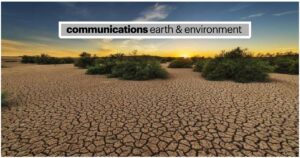Texas Faces Growing Threat: New Research on Flash Droughts
Texas suffers rapid-onset droughts called flash droughts, harming agriculture and water supplies. These droughts are intensifying due to climate change and are becoming harder to predict. Researchers from Texas A&M and Asia are working on solutions.
CONTENTS: Texas Faces Growing Threat

Flash Droughts: Rapid, Severe Dryness
Texas Faces Growing Threat
Droughts typically bring to mind extended periods of dry, hazardous conditions resulting from insufficient rainfall over months or even years. However, similar circumstances can develop rapidly within weeks or days.
Dr. Ashok Mishra from Texas A&M University, along with international researchers, has investigated the factors contributing to the onset of flash droughts. Although their study focused on South Asia, the insights are applicable to Texas and other regions prone to flash droughts. Their findings are published in the journal Communications Earth & Environment.
Texas Flash Droughts: Threaten Agriculture, Water
Texas has previously experienced flash droughts, which significantly impact its economy, particularly in agriculture and energy production—two sectors highly susceptible to these rapid dry spells. Flash droughts lead to decreased water availability and soil moisture, posing challenges for agriculture, water resources, and ecosystem services.
“Though both traditional and flash droughts affect society, they vary in onset speed, intensity, duration, and overall impact,” stated Mishra, a professor in the Zachry Department of Civil and Environmental Engineering. “It is essential to develop effective strategies to mitigate the unique risks and consequences of each type to protect society and the environment.”
Flash Droughts: Worse, Harder to Predict
Researchers have thoroughly studied various aspects of flash droughts, including their rapid onset, severity, and duration. They’ve also investigated how atmospheric circulation patterns and human-induced climate change contribute to drought variability, forecasting that flash droughts will intensify in South Asian countries due to climate change.
“In the future, flash droughts are expected to expand and worsen, affecting water resources, agriculture, and energy sectors,” Mishra emphasizes. “The challenge lies in developing reliable tools for accurately quantifying and predicting these events, posing a significant issue for stakeholders across multiple sectors.”
Fighting Flash Droughts: Policy, Collaboration
Texas Faces Growing Threat: Addressing the challenges posed by increasingly frequent and severe flash droughts due to climate change requires policymakers to understand potential outcomes. Implementing preventative infrastructure and fostering interdisciplinary collaboration are crucial strategies.
This research collaboration includes Texas A&M University, the United States Department of Agriculture, and several Asian countries such as Korea, China, India, and Pakistan.
Check out TimesWordle.com for all the latest news
You must be logged in to post a comment.